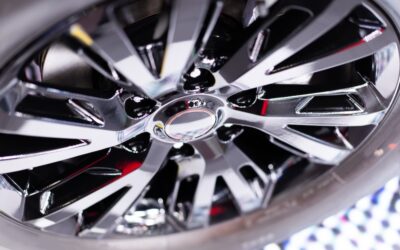Power steering works so well that it’s easy to take it for granted. But have you ever wondered just how it works? Let’s take a look.

How Does Power Steering Work?
Power steering makes it easier for you to control your car through channelling power directly from the steering wheel to the wheels. If your power steering system’s working like it should, then it should never be a strain to turn your wheel. Plus, your car will respond immediately to even the smallest of adjustments you make.
This makes it considerably easier to stay in your lane when you’re driving on the motorway, and carrying out complicated parking manoeuvres can become second nature.
Different Types of Power Steering
Power steering systems can either be hydraulic, electric, or a combination of the two.
How Does Hydraulic Power Steering Work?
The system uses fluid to amplify the force applied to turn your front wheels. Your car’s engine drives a pump, which provides hydraulic pressure to the steering system. When you turn the steering wheel, a hydraulic cylinder applies this hydraulic pressure to your steering gear, which turns your wheels. The whole system relies on the flow of fluid. The harder you turn your wheel, the more fluid flows to the hydraulic cylinder, so the more force is applied to your wheels.
How Does Electric Power Steering Work?
The system uses an electric motor in place of a hydraulic pump. Electric sensors detect the position of the steering column, and measure any force you apply to the steering wheel. A computer then draws force from your motor and applies the correct amount to your wheels. The major benefit of electric power steering over hydraulic power steering is that they can adapt to suit specific driving conditions. If you have an electric power steering system, you can usually choose, at the touch of a button, from numerous settings. A city driving setting, for example, might give you more control at slower speeds.
How Does an Electro-Hydraulic System Work?
These work in the same way as hydraulic systems. However, instead of the engine driving the hydraulic pump, the power comes from an electric motor.
Power Steering in your Driving Theory and Practical Test
Certain questions in your driving theory test might relate to your power steering system. None of them will ask you to give a detailed description of how the system works, so don’t worry about memorising any complex technical terms or mechanical processes. However, they might ask you how you’d tell if there was a problem with your power steering system.
Power steering might also come up in your practical test, as one of your show-me-tell-me questions. Your examiner might ask you to explain how you’d check your power steering is working before you start a journey.
How to Check Your Power Steering is Working
You can turn the wheel just after moving off, to check if the steering is light. You can also apply gentle pressure to the steering wheel after starting the engine, to see if the power steering engages. In each case, if there’s a problem with your power steering, you’ll feel a resistance when you try and turn the steering wheel.
How Can You Tell If There’s a Problem With Your Power Steering?
If you are a learner driver it may be hard to tell if there is a problem as you may still be getting used to the car, But in short, if you’re finding it harder to turn than usual, then there’s probably an issue with your power steering. Your steering should be effortlessly responsive. If it’s not, it could mean you’re running low on power steering fluid, or there could be a leak or a blockage in your system. If you have an electric power steering system, tough steering could indicate a problem with the electric motor that drives your system.
In any case, if you suspect you have a problem with your power steering system, you should head to a mechanic as soon as possible. Head here to read our complete guide to what causes heavy steering.


